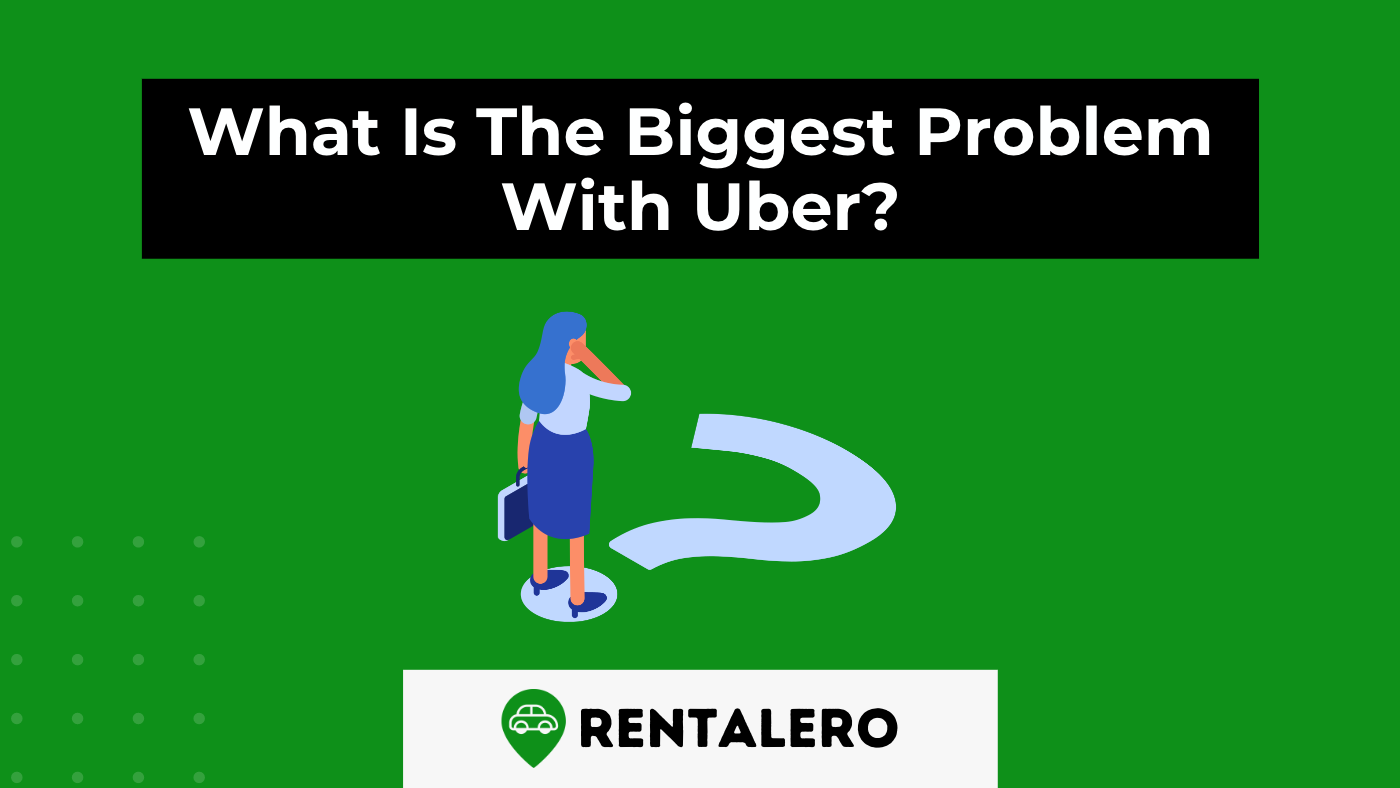Whether you’re a rider or driver, the question, “What is the biggest problem with Uber?” may have crossed your mind. Despite its global presence, Uber has had its share of controversies.
However, do not fret, in this article, we’ll be diving into Uber’s biggest problems and discuss issues like;
- The most prevalent criticisms faced by Uber.
- How this problem impacts both drivers and riders.
- What Uber is doing to address this concern.
Advertising links are marked with *. We receive a small commission on sales, nothing changes for you.
Key Takeaways
- One of Uber’s primary issues is the failure to mandate equivalent professional licenses for their drivers, sparking controversy about their responsibilities and duties.
- Uber’s tight profit margins and difficulty generating substantial profits pose significant economic challenges.
- The social impact of Uber’s operations, including contributing to traffic congestion and the climate crisis, raises sustainability concerns.
- The safety concerns, including allegations of sexual assault and general risk to drivers, highlight the need for more robust safety measures.
- Regulatory issues, fierce market competition, and the inherent risks Uber drivers face present considerable operational challenges for the ride-hailing giant.
Problem 1: Tight Margins
When thinking about Uber’s problems, the first thing that pops up is its “tight margins.” But what does this term mean, and how does it affect Uber’s ability to make money? Let’s break it down.
Understanding Tight Margins
In business terms, “margins” refer to the difference between what it costs a company to provide a service and what it charges customers. When the margins are “tight,” the company isn’t making much money from each transaction.
For Uber, this means that after all the costs are considered, like paying drivers, maintaining the app, and other expenses, there’s not a lot of money left over.
Impact on Uber’s Profitability
Since Uber is making only a little money from each ride, this affects its ability to make profits.
Profits are important because they allow a company to invest in new ideas, pay its employees, and grow. But with tight margins, Uber is finding it hard to do these things.
Ubers Solution
Now, you might wonder, “How can Uber solve this problem? The answer might be surprising. It’s the drivers.
As strange as it sounds, Uber might be able to make more money by not having any drivers at all.
Let’s take a moment to understand this. The cost of paying drivers is one of Uber’s biggest expenses. Uber could keep more money from each ride if it didn’t have to pay drivers. This would help increase its margins and make it more profitable.
But how can Uber provide rides without drivers? The answer is self-driving cars. Uber has been investing in technology that allows cars to drive themselves. This way, they can provide rides without needing to pay drivers.
Problem 2: Unprofitability
Another big issue for Uber is its lack of profit. The company operates in a highly competitive industry, meaning many other businesses provide similar services. This competition makes it hard for Uber to make a profit.
Uber’s Competition
Uber is in an industry where many other companies offer similar ride services. This fierce competition means Uber has to keep its prices low to attract customers.
However, low prices also mean that Uber doesn’t make much money from each ride.
Uber’s Financial Losses
The result of this competition is that Uber has not been making a profit. In fact, over the past four years, Uber has lost more than $27 billion. That’s a lot of money! This loss has made it hard for Uber to operate and grow its business.
Problem 3: Regulatory Issues
Regulatory issues are challenges to rules set by governments or other organizations. These rules are there to keep things fair and safe. But sometimes, companies like Uber have trouble following these rules.
Uber’s Legal Challenges
Uber has had some big legal challenges. For example, there are places where Uber is not allowed to pick up people from airports. There are even entire countries where Uber is not allowed to operate.
Examples of Uber’s Regulatory Run-ins
One big legal problem for Uber was when they were told they had to pay their drivers a minimum wage in the UK.
This meant that Uber had to pay their drivers a certain amount per hour. This increased the cost for Uber, making it harder to make a profit.
Problem 4: Negative Public Perception
Uber has had some big problems. Some of these problems were very serious. For example, some Uber drivers were accused of doing despicable things to passengers. This has made a lot of people worldwide very upset.
And because of these problems, some people started a campaign called “Delete Uber.” This campaign encouraged people to stop using Uber. Because of this campaign, about 500,000 people stopped using Uber in 2017.
Problem 5: Driver Discontent
Uber drivers are not happy. They have problems with how much they get paid and their working conditions. These problems have caused a lot of fights between Uber and its drivers.
Issues on Pay and Working Conditions
One big problem is pay. Uber drivers feel they are not getting paid enough for their work. They also think their working conditions could be better. For example, they might have to work very long hours, which can be tiring and stressful.
Because of this, Uber drivers have had many arguments with the company about these problems. They want Uber to make changes. But they feel that Uber has not done enough to solve these problems.
This unhappiness among drivers is a big problem for Uber. And Uber needs to have happy drivers because if drivers are unhappy, they won’t do their job well, which could make customers unhappy.
Conclusion
While Uber has revolutionized the transportation sector, it has its share of problems. The company has many issues to address, from licensing issues and financial challenges to contributing to environmental concerns.
Nonetheless, Uber continues to evolve, striving to overcome these hurdles while seeking to provide an efficient, affordable, and convenient transportation solution to users worldwide.
Frequently Asked Questions
Why doesn’t Uber require its drivers to have professional taxi licenses?
Uber is a technology platform that connects drivers and passengers rather than a transportation service. Hence, it doesn’t require drivers to have professional taxi licenses.
Why does Uber struggle to make profits?
The ride-hailing market is highly competitive, and to attract passengers, Uber often offers rides at low prices, which can eat into their profit margins. Also, expenses like driver incentives, promotional offers, and legal costs add to the struggle.
How does Uber contribute to traffic congestion?
With its convenience, Uber has attracted many users, leading to more cars on the road, especially in already congested city centers. This increased car presence can worsen traffic congestion.
What safety concerns are associated with Uber?
There have been reported incidents of sexual assault and other crimes involving Uber drivers and passengers. Also, as drivers use their vehicles, there can be inconsistencies in safety measures across different cars.
How does Uber deal with competition from other ride-sharing services?
Uber continually innovates its services, offers promotional deals to retain customers, and explores new markets. However, competition from other ride-sharing services remains a significant challenge.

Nzoputa has been writing for Rentalero since day one and is one of our most experienced members when it comes to the rental industry. For her, nothing beats Uber!
Advertising links are marked with *. We receive a small commission on sales, nothing changes for you.

